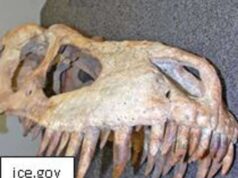
Early Retirements for Chimpanzees
Chimpanzees are an endangered species and are among the most intelligent animals on the planet. They are known for their complex social structures, tool use, and communication skills. Many chimpanzees have spent their lives in research laboratories, where they have been used for biomedical research. In recent years, there has been a movement to retire chimpanzees from research and provide them with an opportunity to live out their lives in sanctuaries. This article explores the concept of early retirements for chimpanzees and the benefits this brings.
History of Chimpanzees in Research
Chimpanzees have been used in biomedical research for decades due to their genetic similarity to humans. In the 1960s and 1970s, researchers used chimpanzees to develop vaccines for diseases such as hepatitis B and C. A number of chimpanzees still live in research laboratories today and are subjected to medical experiments and other types of research.
Benefits of Early Retirement
Early retirement for chimpanzees offers many benefits. First and foremost, chimpanzees in sanctuaries are able to live in a more natural environment, with opportunities for social interaction and physical activity. Sanctuaries provide chimpanzees with larger living spaces, as well as opportunities to climb, swing, and forage for food.
Retiring chimpanzees from research also helps to improve the public perception of these animals. Many people see the use of chimpanzees in research as cruel and unethical. By providing them with a comfortable and safe retirement, sanctuaries can help to change this perception and promote a more positive image of these animals.
Challenges of Early Retirement
Early retirement for chimpanzees is not without its challenges. There are concerns about the cost of caring for retired chimpanzees and the availability of appropriate sanctuaries. Some chimpanzees may also face health issues due to years of living in laboratory environments, such as obesity, diabetes, and heart disease.
Furthermore, many of these chimpanzees have spent most of their lives in research laboratories and may not know how to behave in a more natural environment. They may lack the skills needed to climb trees or forage for food, which can make it difficult for them to adapt to life in a sanctuary.
Conclusion
Early retirement for chimpanzees is an important issue for animal welfare advocates and researchers alike. By providing retired chimpanzees with a comfortable and safe environment, sanctuaries can improve the public perception of these animals and promote a more positive image of chimpanzees. However, there are challenges associated with early retirement, such as the cost of care and the availability of appropriate sanctuaries. Nonetheless, the benefits of early retirement for chimpanzees outweigh the challenges.
In a move that drew criticism from some research groups and applause from animal rights activists, the National Institutes of Health announced this week that it would follow guidelines from an independent review to retire most of the chimpanzees currently being used in NIH-funded research projects.
While the vast majority of scientific research on animals today is conducted on other types of animals, 451 chimpanzees are research animals in NIH-funded facilities today. After the announcement this week, the NIH plans to retain only 50 of these animals for potential future research. The remaining chimps would be placed into sanctuary spaces that were designed to meet their needs for socialization and intellectual stimulation.
The director of the NIH, Dr. Francis S. Collins, say that the NIH believes that “new scientific methods and technologies have rendered [chimpanzees’] use in research largely unnecessary.” The only research projects that will now be approved to use chimpanzees will have to meet a set of rigorous criteria.
Scientists hoping to use chimps in research according to the new guidelines will be required to show that their research could not be done without the use of chimps. They will also need to provide the chimpanzees with significantly more space than any current laboratory uses, and will need to house them in groups of at least seven. Chimpanzees, which are social creatures, can become depressed or aggressive when deprived of contact with others of their species.
As part of the plan to put most of the remaining chimpanzees into sanctuaries, six of the existing nine chimp research projects funded by the NIH will be shut down, while the other three will be allowed to wind down more gradually.
The Texas Biomedical Research Institute, a laboratory that currently uses approximately 20 percent of the total chimpanzees used in research in the United States, says that the reduction may be a mistake, and calls the planned 50 chimp reserve an “arbitrarily chosen number.”
Scientists with the Institute caution that because the guidelines call for the reserve chimpanzees not to be bred, research using chimpanzees will become more difficult over time. Furthermore, they point to the example of Hepatitis C—a disease that only exists in chimpanzees and humans—as a reason that chimpanzees may continue to be needed for research purposes.
A lack of sanctuary space means that while the chimps will be retired to sanctuaries as much as possible, some may need to continue to be housed in laboratories, which will have space repurposed for chimp retirement.




















